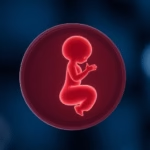Can Inito Detect Pregnancy?
Today we will be talking about whether Inito can detect pregnancy. The Inito device is a revolutionary tool that combines several functionalities, including ovulation tracking and hormone level monitoring. While it is historically used for fertility awareness, many people may wonder if it can accurately indicate pregnancy status. Understanding the nuances of pregnancy detection, hormonal changes, and technology can empower individuals to make informed health decisions.
Detecting pregnancy traditionally involves identifying changes in specific hormones, primarily human chorionic gonadotropin (hCG). This hormone is produced shortly after a fertilized egg attaches to the uterine lining. Pregnancy tests, whether at-home or clinical, are designed to measure the levels of hCG in urine or blood. Various at-home methods periodically provide insight into changes that may suggest pregnancy, but not all of them employ the same technology or accuracy. This blog will elucidate the capabilities of the Inito device, particularly in the context of pregnancy detection, while also exploring the biological and hormonal mechanisms of pregnancy.
1. Understanding the Inito Device
The Inito device is an advanced fertility monitor that combines various features into a single platform. Its primary function is to track ovulation through monitoring hormone levels in urine, specifically estrogen and luteinizing hormone (LH). Many couples looking to conceive utilize this device because it provides insights into the fertile window and overall reproductive health. Unlike traditional ovulation kits that only measure LH, Inito provides more comprehensive hormone insight and can offer a deeper understanding of a woman’s menstrual cycle.
One must understand that while the primary function of Inito is to track ovulation, the knowledge gained from this data can indirectly suggest potential pregnancy. If a user tracks ovulation accurately, they can gain insights into their chances of conception. However, the device isn’t designed exclusively for pregnancy testing; thus, it may not effectively measure hCG levels, the critical hormone for confirming pregnancy.
2. Hormonal Changes During Pregnancy
Pregnancy triggers a cascade of hormonal changes in a woman’s body that are crucial for both the developing fetus and the mother’s health. One of the first hormones to surge post-conception is human chorionic gonadotropin (hCG). This hormone is secreted by the cells that form the placenta and plays a vital role in maintaining the early stages of pregnancy. An increase in hCG levels is typically the biological marker that pregnancy tests aim to detect.
As pregnancy progresses, other hormones such as progesterone and estrogen also increase significantly. These hormones contribute to preparing the body for pregnancy, facilitating fetal growth, and maintaining the health of the mother. Understanding these hormonal shifts is essential, as they impact myriad functions like mood regulation, metabolism, and even immune response during pregnancy.
3. Inito’s Fertility Tracking vs. Pregnancy Testing
It is crucial to differentiate between fertility tracking and pregnancy testing when discussing the capabilities of the Inito device. While Inito provides detailed information about hormonal fluctuations related to the ovulation cycle, it does not test for or indicate the presence of hCG. Instead, it aims to provide data on peak fertility days, helping individuals plan or avoid pregnancy.
This distinction is pivotal because many individuals may assume that by utilizing Inito and monitoring hormone levels, they can determine if they are pregnant. However, the absence of hCG testing means users should not rely on Inito alone for pregnancy confirmation. To accurately know if someone is pregnant, a dedicated pregnancy test measuring hCG levels is required.
4. How Pregnancy Tests Work
Understanding the science behind pregnancy tests can clarify how they function and why they are different from devices like Inito. Most at-home pregnancy tests detect hCG in urine. When a woman becomes pregnant, hCG levels rise rapidly within the first few weeks. At-home tests leverage this hormonal marker to give a clear ‘positive’ or ‘negative’ result. The tests work via chemical reactions that produce a visual clue, typically a line or color change, depending on the test’s design.
Furthermore, these tests can vary in sensitivity, meaning that some may detect lower levels of hCG more accurately than others. Blood tests conducted in healthcare settings can also measure hCG levels and provide more precise readings. Understanding these mechanisms helps individuals choose the right testing method for their pregnancy confirmation.
5. The Accuracy of Home Pregnancy Tests
Home pregnancy tests are generally quite reliable, with numerous studies backing their efficacy when used correctly. Most reputable brands report over 99% accuracy when the test is taken at the time of a missed period, which corresponds to higher levels of hCG in the body. However, factors such as user error, how the test is conducted, and even the timing can influence results.
For instance, taking the test too early, prior to a missed period, may yield a false-negative result due to insufficient hCG levels. Moreover, the timing of urine collection (morning urine vs. throughout the day) can also affect sensitivity. Users should adhere to instructions carefully to optimize the accuracy of the results.
6. Factors That Affect hCG Levels
Various factors can impact hCG levels in a woman’s body, affecting the outcome of pregnancy tests. These include but are not limited to, the timing of the test, individual biological variations, and potential health issues. For example, in cases of ectopic pregnancies or molar pregnancies, hCG levels may not rise as expected, leading to unreliable testing results. Additionally, certain medical conditions, such as ovarian cancer or certain medications, can also cause elevated hCG levels, leading to false positives in pregnancy tests.
Being aware of these factors is essential, especially for individuals who may experience irregular cycles or have health conditions that impact hormonal balance. Thus, any inconsistencies in test results may warrant consultation with a healthcare provider for further assessment.
7. Best Practices for Using Pregnancy Tests
To ensure accurate pregnancy testing results, users should follow several best practices. First, ensure that the home pregnancy test is within its expiration date and properly stored. Reading the instructions thoroughly is also paramount; each test may have unique guidelines regarding timing and technique.
Testing in the morning using the first urine of the day is often recommended because it tends to be the most concentrated, yielding a more reliable result. Moreover, repeating the test after a few days, if the first test indicates a negative result but menstruation has not occurred, can provide clarification as increasing hCG levels will be detected over time.
If there is persistent uncertainty regarding pregnancy status, seeking a blood test through a healthcare professional can provide more definitive diagnostic results.
8. Understanding False Positives and Negatives
False positives and negatives can occur in pregnancy testing and can be confusing. A false negative is when the test indicates a negative result despite the presence of pregnancy; this may happen due to testing too early, not using the first morning urine, or using a test that lacks sensitivity. Conversely, false positives can happen under certain circumstances, such as chemical pregnancies, ectopic pregnancies, or conditions that produce hCG outside of regular pregnancy, such as specific cancers.
Understanding these potential pitfalls emphasizes the importance of not solely relying on home pregnancy tests for conclusive results. Additional follow-up with a healthcare provider can clarify and confirm any uncertainties arising from home testing.
9. Other Methods of Confirming Pregnancy
Besides home and clinical urine tests, blood tests are another method of confirming pregnancy. These blood tests can be qualitative, simply measuring the presence of hCG, or quantitative, which involves measuring the actual amount of hCG hormone in the blood. Such tests are highly accurate and can detect pregnancy earlier than urine tests, typically hugging the balance of days before a missed period.
Moreover, ultrasound exams can also confirm pregnancy, allowing visualization of the developing embryo and checking for heart activity. These methods often become necessary when home tests yield confusing results or when there are concerns about the health of the pregnancy. Everyone’s health journey is unique; therefore, exploring various pathways through professional healthcare can ensure the best outcomes during the reproductive journey.
10. Conclusion: Inito Device Limitations in Pregnancy Detection
In summary, while the Inito device plays a pivotal role in tracking fertility indicators such as ovulation through hormone monitoring, it does not serve as a pregnancy test. Individuals utilizing Inito must understand its limitations regarding hCG detection and, therefore, cannot confirm pregnancy status solely based on its readings. Successful pregnancy detection hinges on utilizing dedicated pregnancy tests that align with hormonal changes during pregnancy.
Keeping up-to-date knowledge about hormonal changes, factors affecting pregnancy, and understanding how to navigate through testing can empower individuals seeking to conceive or those exploring pregnancy confirmations. Collaborating with healthcare professionals can ensure tailored support aligned with individual needs.
Frequently Asked Questions
1. Can the Inito device confirm pregnancy?
No, the Inito device is not designed to detect pregnancy. It tracks fertility hormones but does not measure hCG levels needed to confirm pregnancy.
2. How does a home pregnancy test work?
A home pregnancy test detects the presence of hCG hormone in urine, which is produced after a fertilized egg implants in the uterine wall.
3. What factors can affect the accuracy of a pregnancy test?
Timing of the test, individual hormonal levels, and test sensitivity can all impact the accuracy of a pregnancy test.
4. When should I take a pregnancy test for the most accurate result?
For the most accurate results, take a pregnancy test after a missed period, using the first morning urine for higher concentration of hCG.
5. What should I do if my pregnancy test is negative, but I still suspect I am pregnant?
If you suspect pregnancy despite a negative test, wait a few days and retest. If uncertainty persists, consult a healthcare professional for a blood test or further evaluation.
Further Reading
3.5 tog sleeping bag temperature guide
What Type of Psychotherapy Is Best for Anxiety?







